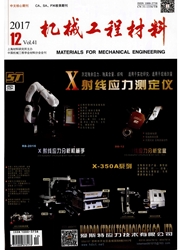

 中文摘要:
中文摘要:
对比了搅拌式砂磨与传统球磨的研磨效率,用两种方法相结合的工艺制备了电瓷原料,用激光粒度分析仪测定了粉体的粒度分布,用扫描电镜分析了电瓷压坯的颗粒形貌,按照GB/T 775-2006测试了烧结电瓷的抗弯强度和电绝缘强度。结果表明:搅拌式砂磨15 min对铝矾土的研磨效果已经超过传统滚筒式球磨40 h的效果,当砂磨时间从15 min延长到60 min时,只对10 μm以上颗粒的细化效果显著;采用二次加料生产电瓷原料的颗粒基本小于6 μm;平均粒径相差不大时,用球磨与砂磨相结合的工艺,可以缩小粒径分布范围,明显减少大尺寸颗粒,缩短研磨时间50%以上;二次加料工艺对生产的电瓷材料电绝缘强度影响不大,但抗弯强度提高了20%~30%。
 英文摘要:
英文摘要:
In order to compare the efficiency of grinding of stirred bead milling and conventional boll milling, electrical porcelain was prepared by combined the two process. The size distribution of the powders was tested by laser particle size analyzer. The morphology of electrical porcelain compaction was analyzed with SEM. The flexural strength and electric insulating strength were tested according to national standard GB/T 775--2006. The results show that compared with the conventional drum-type ball milling, the grinding effect of stirred bead milling for 15 min was better than that of ball milling for 40 h. Prolonging the stirred bead milling time from 15rain to 60 min could be obvious in refining particles of 10 μm or above in diameter. The particle size was less than 6 μm when the method of twice-adding was used in preparation of electrical porcelain body. By combination of ball milling and stirred bead milling, the electrical porcelain had a similar average particle size and little large size particles, about 50% milling time was saved. The effect of twice-adding process on electric insulating strength of the electrical material was small, and the flexural strength was enhanced by 20%-30%.
 同期刊论文项目
同期刊论文项目
 同项目期刊论文
同项目期刊论文
 Microstructure and mechanical properties of 3-D interpenetrated network structure MoSi2-RSiC composi
Microstructure and mechanical properties of 3-D interpenetrated network structure MoSi2-RSiC composi 期刊信息
期刊信息
